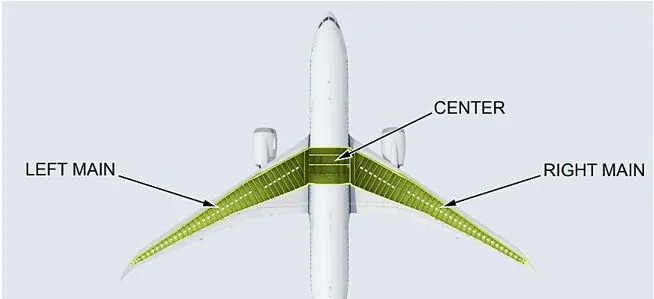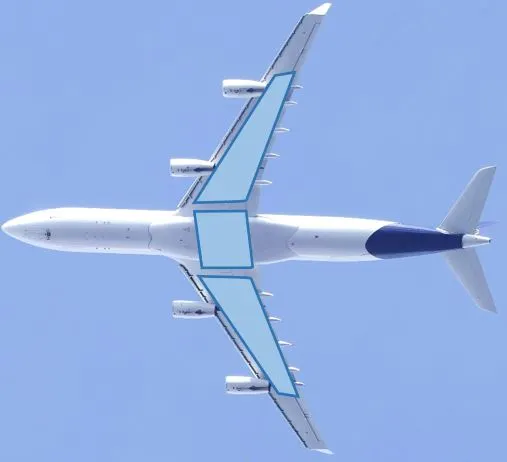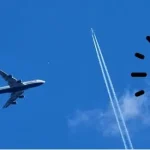Picture this: you’re sitting on a plane, the engines hum, the flight attendants flash smiles, and you’re nestled in your seat, blissfully unaware that a gigantic metal box of kerosene is cruising with you at 35,000 feet. Ah yes, the unsung hero of the skies: the aircraft fuel tank. Let’s dive in (not literally, please) and explore everything you never knew you needed to know about aircraft fuel tanks, and why they’re one of the most fascinating parts of a plane!
1. What’s a Fuel Tank, Anyway?
Think of a fuel tank as a big, mobile gas station that a plane takes along for the ride. But unlike a car’s fuel tank, aircraft tanks don’t just sit around waiting to be refilled. They’re part of an engineering symphony that ensures the plane doesn’t become a 747-ton glider mid-flight.
2. Where Does All That Fuel Go?

Contrary to popular belief, the plane’s wings aren’t just for keeping you aloft—they’re actually where most of the fuel hangs out. That’s right: those slender, sleek wings double as massive gas cans. Why? Because putting fuel in the wings spreads the weight out more evenly and reduces stress on the plane’s structure. Smart, right?
And if the plane needs more fuel than the wings can handle? That’s when it gets interesting! Some aircraft have additional tanks in the fuselage, the tail, or even special “auxiliary” tanks that pop in and out like oversized Lego blocks. The Boeing 747, A380 for example, has a tail tank to help keep things balanced (so it doesn’t do an unintentional wheelie during takeoff).
3. How Much Fuel Are We Talking Here?
Airplane fuel tanks can hold an outrageous amount of fuel. A Boeing 747 can carry around 48,400 gallons of fuel and B777 can carry around 45,220 gallons. That’s enough to fill up 1,200 cars—or fuel your average college student’s ramen budget for a lifetime.
| Aircraft Model | Fuel Capacity (US Gallon) | Fuel Capacity (Ib) | Fuel Capacity (KG) |
| Boeing 777-300 | 45,220 | 305,687 | 138,672 |
| Boeing 787-9/10 | 33,380 | 223,980 | 101,595 |
| Airbus A350-900 | 37,200 | 244,000 | 110,676 |
| Airbus A330-300 | 36, 740 | 240,712 | 109,185 |
| Airbus A380 | 85,472 | 559,937 | 253,983 |
Generally, an aircraft does not refuel to full capacity. The fuel required to reach the destination is carefully calculated to account for the distance as well as any unexpected scenarios like-holding, diversion, returning etc. Longest flight like New York to Singapore requires maximum fuel. So the next time you hear “non-stop” flight, remember that it’s really all thanks to a carefully engineered fuel tank system ready to haul all that juice.
4. Fuel Isn’t Just Sitting There – It’s Actually Moving Around
Airplanes are picky about their center of gravity—too much weight in the back, and you’ve got yourself a tail-heavy plane. Not fun. Too much weight up front, and the pilot’s wrestling with a nose-diving beast. This is why aircraft have a “fuel management system” that actually moves fuel between tanks as the plane is in flight. Yes, you read that right!
Some of this is automatic, and some of it’s controlled by the pilots, who get to play “Fuel Tetris” at 30,000 feet. So if you’re ever worried about boredom in the cockpit, don’t be. They’re managing fuel and weight, keeping things balanced, and making sure gravity doesn’t become their enemy.
5. Types of Aircraft Fuel: Because Kerosene Tastes Better Than Gasoline
Jet fuel is mostly kerosene—specifically, Jet-A or Jet-A1 for commercial planes. It’s different from your car’s gasoline because jet fuel has a higher flash point (the temperature at which it can ignite). And it’s specially formulated to avoid freezing up in those chilly, high-altitude clouds. Jet fuel also smells like the essence of adventure… or perhaps what you’d expect from a highly flammable substance that powers metal birds across the globe.
6. Safety Features: No, They Don’t Use Duct Tape
Fuel tanks don’t just hold fuel; they keep it safe. They’re reinforced, designed to handle extreme pressure changes, and thoroughly sealed to avoid leaks. They even have “inerting systems,” which pump in gases like nitrogen to reduce the risk of explosions. So, no, they’re not held together by duct tape, unless you count the stuff on budget airlines (just kidding!).
Plus, fuel tanks are grounded during refueling to prevent any stray static electricity from turning the plane into a giant firecracker. And all that fuel is constantly filtered and checked to ensure nothing weird gets in. Remember, in aviation, safety is the name of the game!
7. Fun Facts: Because Who Doesn’t Like Trivia?
- Fact 1: An average commercial plane burns about a gallon of fuel per second. Yep, each minute that you’re marveling at the view, a gallon’s already gone!
- Fact 2: Military aircraft often carry extra fuel tanks called “drop tanks.” They can jettison these if they need to fly faster or lighter. It’s the closest thing to a plane doing a “drop-the-mic” moment.
- Fact 3: Some small private planes use mogas, which is just your regular car gasoline. So, technically, your car and a Cessna 172 could be “fuel buddies” (but don’t try to take a road trip in a Cessna).
8. Refueling in Mid-Air: The Ultimate Gas Station
Refueling in mid-air is exactly as intense as it sounds. Military planes and some VIP transports can be refueled mid-flight. A “tanker” plane with a giant, hose-like boom extends this in mid-air, and the receiving plane has to line up perfectly to connect and refuel. It’s like trying to pass a cup of coffee between two moving cars—at 500 miles per hour.
9. What Happens if They Run Out of Fuel?
Planes plan their fuel supply meticulously, with plenty of “reserve” fuel in case they need to circle a bit or divert to another airport. But, on rare occasions, fuel can run low. In one famous case, an Air Canada flight in the 1980s, dubbed the “Gimli Glider,” ran out of fuel due to a metric-to-imperial measurement mix-up. The pilots managed to glide the aircraft down safely without fuel—proving that if you’re going to run out of gas, it helps to have wings!
In Conclusion: A Toast to Fuel Tanks!
It’s more than just a metal box of kerosene; it’s a complex system, a balance master, and an unsung hero of aviation that makes your journey possible. So, here’s to the fuel tanks, the engineers who build them, and the pilots who manage them. Because without them, we’d all just be driving in circles around the airport… dreaming of flight!



